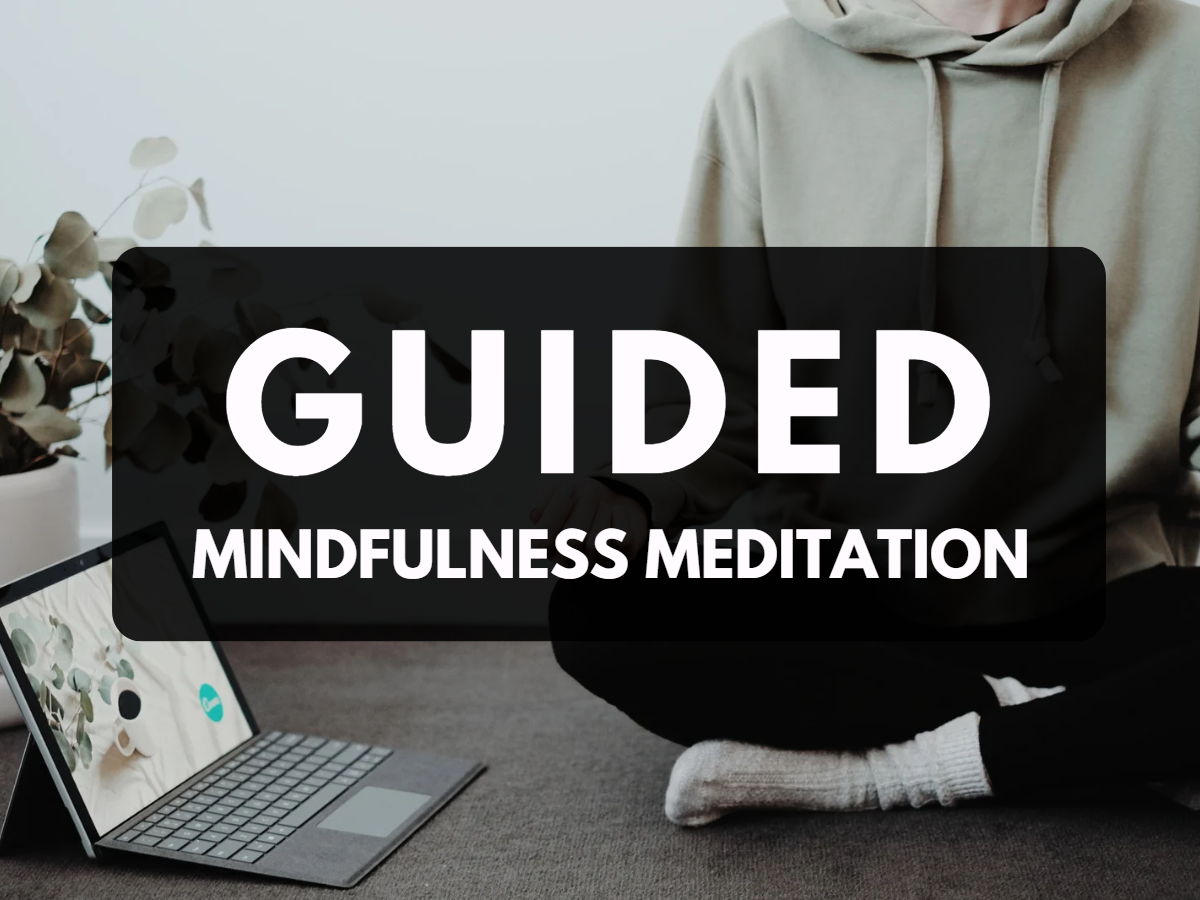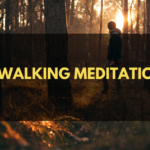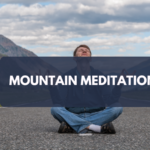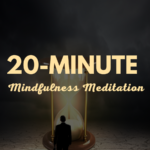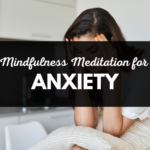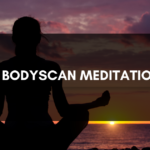Guided Mindfulness Meditation
Journey to Self-Discovery with Guided Mindfulness Meditation
Stress, anxiety, and other mental health issues are becoming increasingly common in today’s fast-paced world.
Guided mindfulness meditation is a simple yet powerful technique that can help us manage these issues and improve our overall well-being.
In this blog post, we will explore guided mindfulness meditation and how it differs from other types of meditation.
Let’s dive right in!
What is Guided Mindfulness Meditation?
Guided mindfulness meditation is where an experienced teacher or guide leads you through the meditation process. In guided mindfulness meditation, the guide provides verbal instructions and prompts that help you focus on the present moment and become more aware of your thoughts and emotions.
What is the Difference Between Mindfulness and Guided Meditation?
Mindfulness and guided meditation focus on the present moment, and the two practices have some key differences.
Mindfulness meditation is a self-guided practice that involves sitting silently and focusing on your breath or a particular sensation. The goal is to cultivate awareness and acceptance of your thoughts and emotions without judgment.
Guided mindfulness meditation, on the other hand, involves following the guidance of a teacher or guide who provides instructions on focusing on the present moment.
The guide may provide prompts to help you become more aware of your emotions and thoughts.
They may lead you through a specific visualization or imagery exercise.
The main difference between the two practices is that guided mindfulness meditation is more structured and directed, while mindfulness meditation is more open-ended and self-directed.
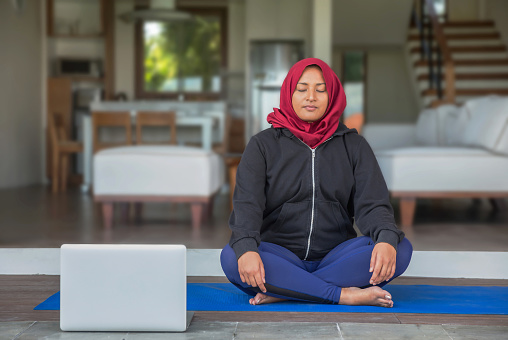
Benefits of Guided Mindfulness Meditation
Guided mindfulness meditation offers a range of benefits, including:
- Reducing stress and anxiety: Guided mindfulness meditation has been shown to decrease stress and anxiety by helping people become more aware of their thoughts and emotions and develop a greater sense of calm and relaxation.
- Improving focus and concentration: By learning to focus on the present moment, guided mindfulness meditation can help improve focus and concentration, making it easier to stay on task and complete daily activities.
- Enhancing self-awareness: Guided mindfulness meditation can help people become more self-aware by allowing them to observe their thoughts and emotions without judgment.
- Boosting mood and well-being: Guided mindfulness meditation has been shown to improve mood and well-being by reducing negative and increasing positive emotions.
Guided Mindfulness Meditation for Anxiety
One of the most popular uses of guided mindfulness meditation is for anxiety relief. Anxiety is a common mental health condition affecting millions of people worldwide.
Guided mindfulness meditation can help alleviate anxiety by providing a structured, calming environment that makes people more aware of their thoughts and emotions.
Guided mindfulness meditation for anxiety typically involves focusing on the breath and visualizing a peaceful scene or environment.
The guide may also provide prompts to help people become more aware of their thoughts and emotions and develop a greater sense of calm and relaxation.
Best Guided Mindfulness Meditations for Anxiety
There are many guided mindfulness meditations available online, but some of the best ones for anxiety include the following:
- “Breathing Space” by Mark Williams: This guided meditation is designed to help people take a few minutes out of their day to focus on their breath and become more aware of their thoughts and emotions.
- “Mountain Meditation” by Jon Kabat-Zinn: This meditation is designed to help people visualize themselves as a strong and unshakable mountain in the face of anxiety and stress.
- “Loving-Kindness Meditation” by Tara Brach: This meditation is designed to help people cultivate feelings of kindness and compassion toward themselves and others, which can help alleviate anxiety and promote well-being.

Preparing for Guided Mindfulness Meditation
Preparing yourself and your environment is important before beginning a guided mindfulness meditation session. Find a quiet, comfortable space to sit or lie down without being disturbed. Ensure you wear comfortable clothing and remove any distractions, such as phones or computers.
Once settled in your space, take a few deep breaths and focus on your breath. Follow your breath as it moves in and out of your body, feeling the air moving in and out of your nostrils or your chest rising and falling.
Mindfulness Meditation for Beginners
If you’re new to mindfulness meditation, starting with a beginner’s session can be helpful. This can help you get a feel for the practice and give you a sense of what to expect.
As a beginner, it’s important to approach mindfulness meditation with an open mind and without any expectations. So don’t worry if your mind wanders or you find it difficult to focus.
DISCLAIMER: You may read aloud the guided meditation script published below in live settings, such as private sessions, classes, workshops, worship services, therapy groups, and other gatherings. You may make a recording of this script for personal use. You may not use this script for audio, video, or other types of recordings given away, sold, or otherwise distributed in quantity. You must contact us directly for written permission to use material on this website beyond the limits set forth above.
Guided mindfulness meditation script
Here is a guided mindfulness meditation script that you can use to help you relax and become more present in the moment:
- Begin by finding a comfortable position on the floor or in a chair with your legs crossed. Rest your hands on your lap or knees, and gently close your eyes.
- Take a deep breath through your nose. After that, slowly exhale through your mouth, releasing any tension or stress you may be holding onto.
- Now, bring your attention to your breath. Notice the sensation of the air moving in and out of your body. You don’t need to try to change your breathing in any way. Just simply observe it.
- As you focus on your breath, thoughts may arise in your mind. When this happens, simply acknowledge the thought without judgment and bring your attention back to your breath.
- Now, bring your attention to your body. Notice any sensations you may be feeling, such as warmth or tingling. Again, simply observe these sensations without judgment.
- If you notice any tension or discomfort in your body, see if you can release them on your exhale, allowing your body to relax even further.
- Now, bring your attention to the present moment. Notice the sounds around you, the feel of the air on your skin, and other sensations.
- Again, if thoughts arise, simply acknowledge them and bring your concentration back to the present moment.
- Take a few more deep breaths, and then when you’re ready, gently open your eyes and return to your day.
Remember, this is just one example of a guided mindfulness meditation script. Feel free to modify it to suit your needs and preferences or try out different scripts and guided meditations until you find what works best.

Guided Mindfulness Meditation for Students
For students, mindfulness meditation can be a useful tool for reducing stress and increasing focus. Research has shown that mindfulness can improve attention and cognitive performance and reduce symptoms of anxiety and depression.
There are many guided mindfulness meditations available specifically for students. These meditations may focus on exam preparation, managing stress during the school day, or simply finding a sense of calm and relaxation.
Best guided mindfulness meditation for students:
Many great guided mindfulness meditations can help with stress, focus, and overall well-being.
Here are some of the best-guided mindfulness meditations for students:
- “Mindful Breathing” by Stop, Breathe & Think” – This meditation focuses on the breath, encouraging students to slow down and pay attention to their breathing. It is a fantastic way to reduce stress and anxiety and can be done anytime, anywhere.
- “Stress-Busting Meditation” – This meditation helps you to release stress and tension from your body and mind, making you feel more relaxed and at ease.
- “Breathing Space Meditation“ – This meditation helps you to take a step back from your regular busy schedule and focus on your breath, allowing you to recharge and refocus your energy.
- “Positive Affirmation Meditation” – This meditation encourages you to replace negative self-talk with positive affirmations, helping you build self-confidence and self-esteem.
- “Focus and Concentration Meditation” – This meditation helps you to improve your focus and concentration, making you stay alert and focused during classes and exams.
- “Gratitude Meditation” – This meditation helps cultivate gratitude and appreciation for the present moment, allowing you to shift your focus from stress and anxiety to positivity and joy.
- “Morning Meditation” by Headspace – This meditation is designed to help students start their day off on the right foot. It encourages mindfulness and gratitude, helping students feel more positive and energized for the day ahead.
Remember…
No “best” guided mindfulness meditation exists for students – everyone’s needs are different. Experiment with different meditations and find what works best for you. And don’t forget – mindfulness meditation is a skill that takes practice to improve. Stick with it, and you’ll soon see the benefits in your life as a student.
Key Takeaway
Guided mindfulness meditation is a simple yet effective technique to help us manage stress, anxiety, and other mental health issues. Focusing on the present moment and cultivating a non-judgmental attitude will improve your well-being and lead to a happier, more fulfilling life.
No matter whether you’re new to meditation or have been practicing for years, guided mindfulness meditation is a tool that can help you navigate life’s challenges effortlessly. So why not give it a try today?
You may be surprised at just how much it can change your life.

